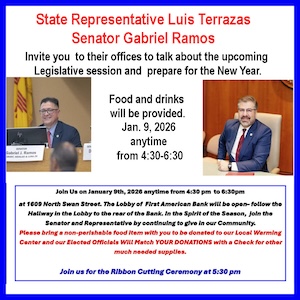Peirspictiochtai Ar An Saol
Zero-Based News
Part Eleven

One of the ways "news" becomes "news" is because of how news is gathered.
In some cases, people reporting the news seek out information to develop their news coverage.
In other cases, people reporting the news are provided with information that they use to develop their news coverage.
Those approaches may – or may not – give consumers of news an accurate view of reality. The news could be factual, but not truthful. Information not included in news presentations may be more important than the information included in news presentations.
Consider coverage of crime.
Why are more cars stolen in a specific community? Why does crime seem to be out of control in a specific shopping area? Why do the oddest types of crime seem to occur in a specific community?
You may notice a lot of news highlighting crime in community "X," but not much news about crime in community "Y." That news coverage may – or may not – be comprehensive about crime in the region.
Based on that news coverage, you may surmise that crime is a big problem in community "X," but not in community "Y."
That may – or may not – be accurate.
The sources of the information used by the individuals determining the news may be more available in community "X" than in community "Y." That could be the case for a variety of reasons.
Community "X" may make it a simple process for a news reporter to review logs of arrests. Community "X" may make its police chief or communications representative readily available for interviews; those individuals may be known to use colorful language that make good quotes in a news piece. Community "X" may provide photographs, videos, or other images available for public dissemination. The leaders of community "X" may have a philosophy that they want people to know that community "X" is tough on crime.
Community "Y," on the other hand, may limit access for a news reporter to review logs of arrests. Community "Y" may decide not to make anyone available to do interviews with the news media. Community "Y" may not release or may limit the images they provide for public dissemination. The leaders of community "Y" may have a philosophy that they only highlight the positive aspects of life in their community and prefer not to air the dirty laundry of criminal activities in their community through the news media.
Given those realities, a news organization may be more likely to highlight crime in community "X" than in community "Y."
Consider coverage of commercial activities.
Why is a new coffee drink "news"? Why is a specific flower shop highlighted each Mother's Day? Why is a specific convenience store the site of many of the reports on weather storms?
You may notice a lot of news about a specific subject that highlights business "X," but not much news about that specific subject at business "Y." That news coverage may – or may not – be comprehensive about the specific news subject.
Based on that news coverage, you may be more likely to frequent business "X" concerning that specific subject than business "Y."
That may – or may not – be the best course of action for you.
The sources of the information used by the individuals determining the news may be more available at business "X" than at business "Y." That could be the case for a variety of reasons.
Much as businesses pay for advertisements in broadcast, print, streaming, and other platforms, some businesses have determined that inclusion in news coverage can be another way to encourage you to patronize their businesses.
Business "X" may send news releases to the news media. Business "X" may make it convenient for a news reporter to interview its representative and/or customers. Business "X" may provide a news reporter with easy access to restrooms, communication connections, and other resources. Business "X" may provide photographs, videos, or other images that a news reporter can utilize to illustrate their news piece.
Business "Y," on the other hand, may not send news releases to the news media. Business "Y" may limit access for a news reporter to interview its representatives and/or customers. A news reporter may have limited access to restrooms, communication connections, and other resources at business "Y." Business "Y" may not provide photographs, videos, or other images that a news reporter can utilize to illustrate their news piece.
Given those realities, a news organization may be more likely to highlight commercial activities at business "X" than commercial activities at business "Y."
The next news column in this series will focus on how other sources of news can determine what news is reported.
Peirspictiochtai Ar A Saol – Gaelic – Irish – for "Perspectives On Life" is a column focused on aspects of accountability and responsibility as well as ways people look at life.
Contact Richard McDonough at
© 2025 Richard McDonough











